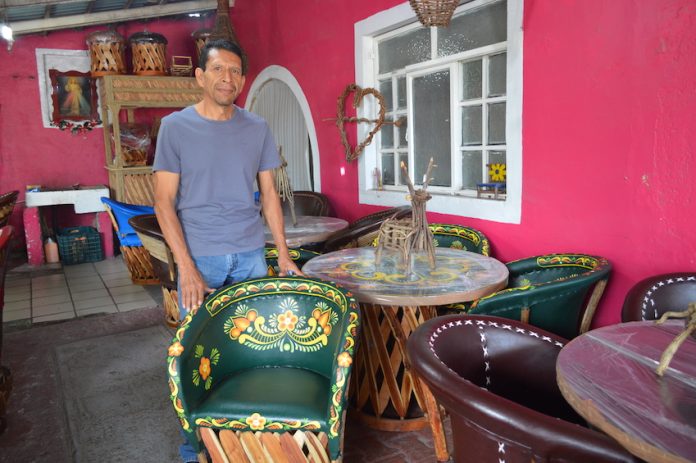If you have been to Mexican restaurants in the U.S. (and perhaps elsewhere), there is a very good chance you have seen this unusual furniture style that dates back centuries.
Equipales are distinguished with the use of criss-cross slats and padded leather. The most representative piece of the style is a chair with a curved back.
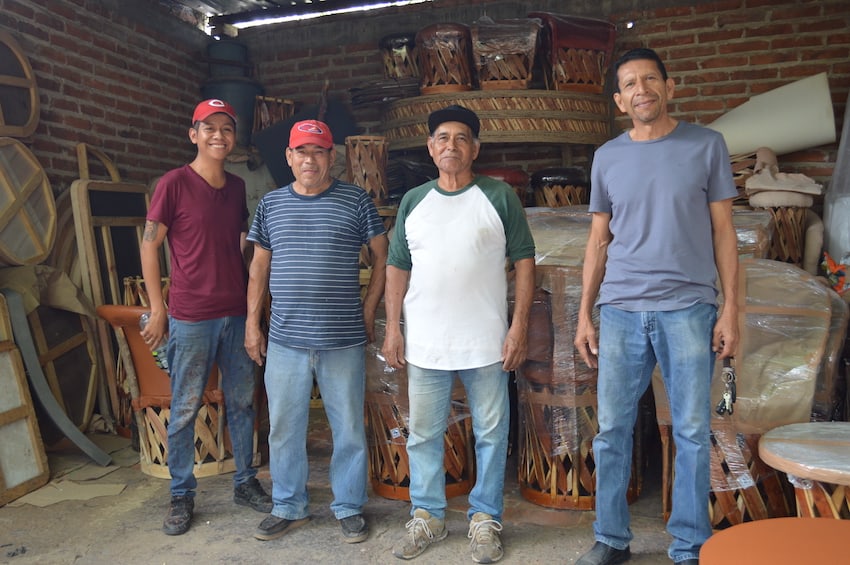
This chair harkens back to the style’s origins: a low stool reserved only for rulers in Mesoamerica. Its symbolism was so important that the Spanish used them in the early colonial period, though not without some modification; they added cushioned leather and a back.
The basic techniques remained the same however, and over the centuries have been applied to the making of various kinds of furniture.
Use of the equipal died out over most of Mexico, but one area that preserved it is the town of Zacoalco, just south of Guadalajara. Today, its craftsmen are the most important producers of the handcrafted furniture, mostly by luck: a rail line was built through the town that connects it south to Colima and north to the U.S. border.
This rail line not only allowed the isolated community to ship furniture to Guadalajara but to introduce it beyond the state of Jalisco and into the southwestern U.S. Today, trucks and highways have taken over much of the logistics, but the rail line still defines where the furniture remains the most popular in both countries.
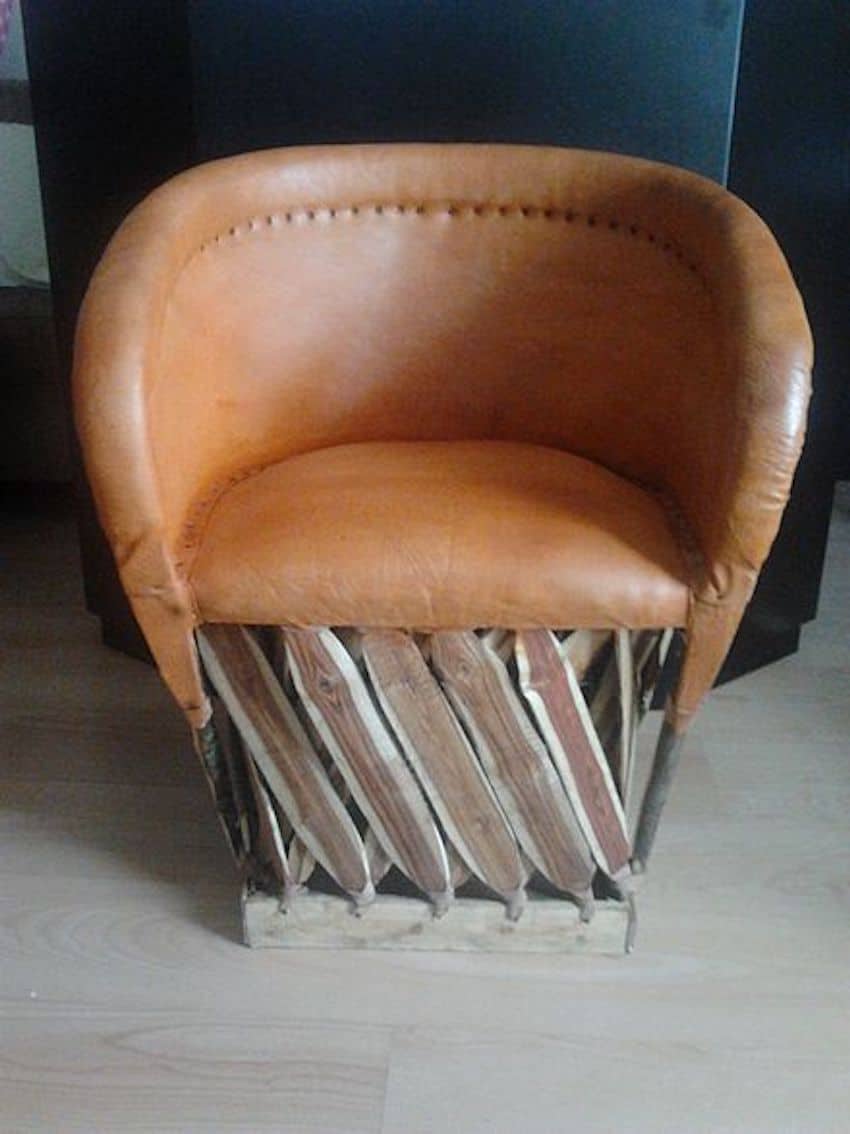
There are a myriad of equipal craftsmen here, and their production varies in quality, quantity and styles. But few have made equipal a status symbol like the family of Don Ramón Hernández.
The family’s showroom is in a prime location, just inside the arches entering Zacoalco from the highway, but the sign in front simply says “Galería de Equipales” with little to hint at the treasures inside. That is seemingly on purpose, as the Galería’s products and clientele are exclusive.
The family has generations of experience making the furniture. Don Ramón himself learned the basics from his uncle Andrés Cantor and cousin Bascilo, who learned from the generations before them. But that is not what sets the family cooperative apart.
Don Ramón decided to leave Zacoalco for the United States, where he worked in hotels and restaurants, learning a fair amount of English and even some French. Most importantly, he learned that there was a wealthy market that could be developed for equipales.
Returning home, Hernández partnered with his cousins in 2005, who had started the cooperative some years earlier. He convinced the family that they did not have to sell to middlemen, who paid poorly, but rather directly to upscale buyers, if they could establish a reputation for quality merchandise.
“What we sell is very, very, very exclusive, as many of our customers are looking for something different and better than what they can find [elsewhere],” says Hernández.
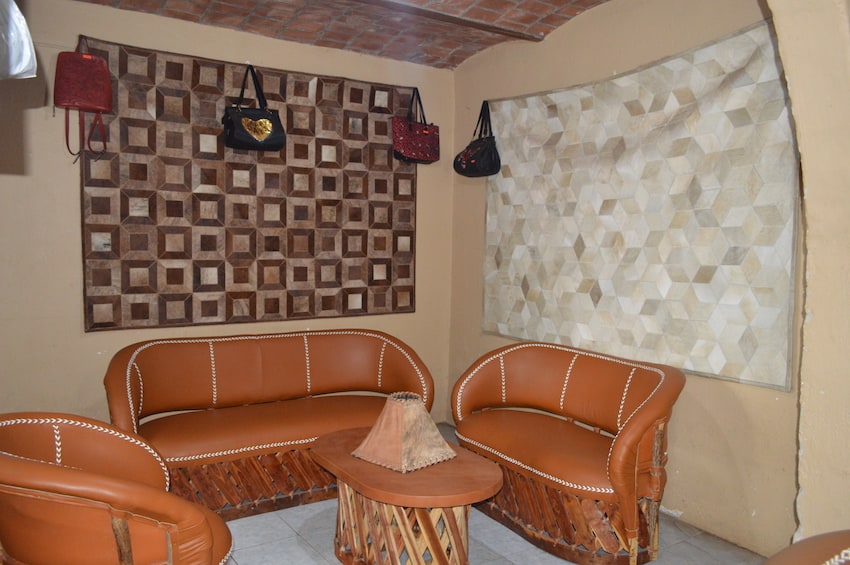
From the start, he used his contacts in the hospitality industry. From there, he reached other businesses, architects and interior designers. The direct sales allow the family to tailor furniture to customers’ tastes and even get inventive — designing sofas, vestibules, dining sets and wall hangings made from leather scraps.
All derive their inspiration from tradition, although they have worked to make the chairs and sofas more comfortable, integrating ergonomic design and experimenting with different leathers, padding and support elements.
His other advantage is quality — in both craftsmanship and materials — although this is not easy. Getting suitable leather and wood takes time. Traditional woods, such as rojo paduzco — used primarily for the slats — can be harvested only at certain times of the year, and overexploitation is forcing their suppliers to travel hours away to find suitable trees. They buy most of their leather as rawhide but process the skins themselves to ensure quality.
Over the past 20 years, the cooperative has evolved, but it is still a family affair with over 14 craftsmen and others in administrative roles. Those few who are not family were admitted only after strict vetting.
It should be stated that Galería de Equipales is not a factory. All members have their own workshops but coordinate the construction, promotion and sale of the furniture collaboratively. This allows finished works to have a uniformity, but perhaps more importantly, says Hernández, the cooperative can respect individual and traditional working styles.
“I have to adapt myself to them, not them to me,” says Don Ramón, noting that it is important to take days off for local festivals and respect that most of the family is still involved in agriculture, leaving less time for furniture-making during the rainy season.
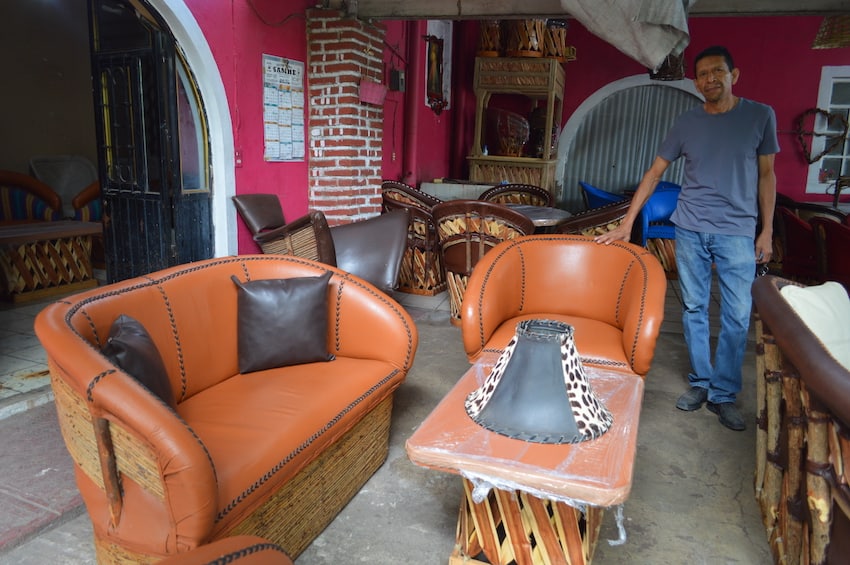
Although he does do tasks like painting and other finishing touches, Hernández’s main role in the cooperative is to be its “face” — so much so that the organization is colloquially referred to as his. He has traveled in much of Mexico and the U.S., meaning the cooperative’s furniture can be found all over both countries in upscale businesses and luxury homes.
U.S. restaurants remain an important part of his clientele, but recent restrictions on the importation of leather and wood products have made this business more difficult.
Word of mouth remains the family’s most important advertising, and they eschew an online presence, which would require an inventory of repeatable pieces, something he finds difficult and antithetical to how the cooperative works.
Instead, many customers are willing to come to the showroom to choose from the wide variety of already-made furniture — which ranges from the absolute traditional to the innovative.
In a way, you could say that Hernández’s family has returned the equipal to its former high social status, once again creating a kind of “throne” for those who demand only the finest quality.
Leigh Thelmadatter arrived in Mexico over 20 years ago and fell in love with the land and the culture in particular its handcrafts and art. She is the author of Mexican Cartonería: Paper, Paste and Fiesta (Schiffer 2019). Her culture column appears regularly on Mexico News Daily.
